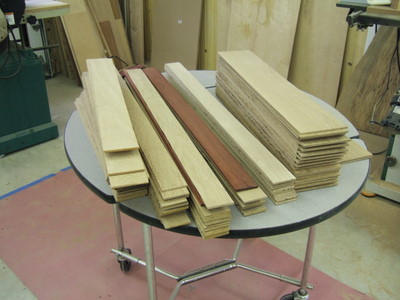
|
Here are the laminations
ready for glue up for two complete chairs. All laminations are
white oak and have been resawn and thickness sanded to a uniform
thickness of 1/8 inch. It is very important to thickness sand
these laminations to assure a very consistent thickness so there will
be no voids during glueup.
|

|
The glue used for bentwood lamination is absolutely
critical. I use a two part glue alled urea formeldhyde.
This is the same glue commonly used in the plywood industry, but
formulated to cure at room temperature. Unlike other glues, this
glue forms an absolutely rigid glue line resulting in virtually no
creep or spring back after the laminations are removed from the forms.
I use a small paint roller to place an even coat of glue on all mating
surfaces. To protect the two outside surfaces (e.g.: the outside
faces of the resulting glue lam) I covered each surface with packing
tape. This glue is very difficult to remove from anyplace you
don't want it to be, so using tape to protect surfaces is essential.
|
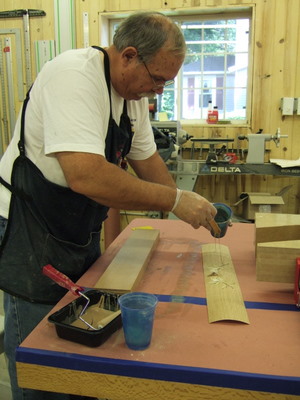
|
Here I'm apply a fairly generous amount of the glue to the
glue side of the sheet of veneer containing the marquetry image.
Since this veneer is only about 1/42 inch thick, you normally only
apply glue to the substrate when working with veneer. This is the
one exception to that rule because applying the glue over the marquetry
image ensures that any tiny spaces in the images will be filled with
glue causing the joints to virtually disappear.
|
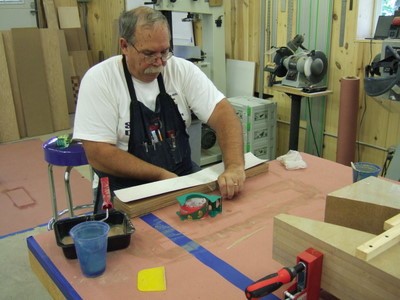
|
At this point all the surfaces have glue on them and I'm
preparing the stack to go into the form. To keep the stack from
moving as pressure is applied, I'm using packing tape to bind the
package of laminations together in the center.
|

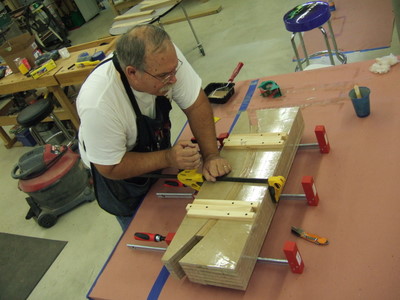
|
Here you can see the process of bringing the two halves of
the forms together. Notice the system I use to ensure both forms
remain in alignment as pressure is applied by the clamps. Also
notice that the clamps under the forms are ready to go to apply uniform
pressure as soon as I use the yellow clamp to bring the two halves
together. This picture also shows how everything is coverd with
packing tape to keep the glue from sticking where it does not belong.
|
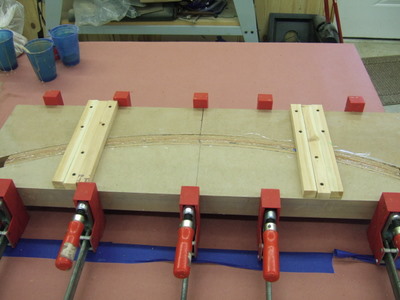
|
This is a picture of one of the rockers in clamps waiting for the glue to dry. I leave the assembly clamped overnight.
|
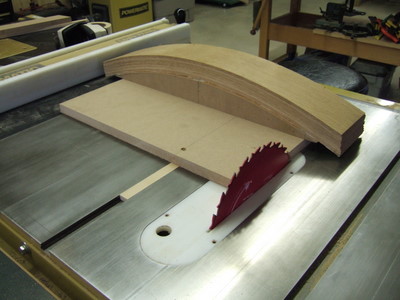
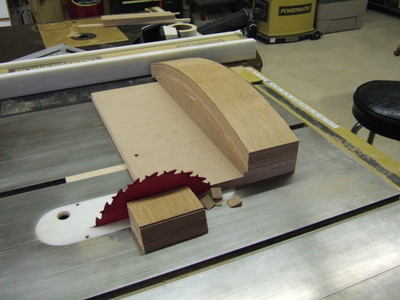
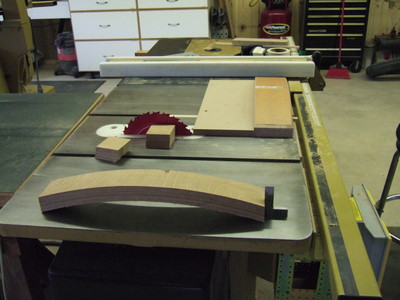
|
I made the back rests longer and used this jig on the table
saw to trim the ends to exact length and at a relative angle of 90
degrees. This sled took about 4 hours to build and the trimming
operation on the back rest pieces about 10 minutes to complete.
This really is the nature of chair making. You spend a lot of
time making forms, jigs and fixtures. The rule is that it will
usually take you a lot long to make these things that it will spend
using them. Of course, these can be reused later to make another
chair and the time you spend making the next chair is reduced by the
time it took you to make the jigs and fixtures. The only trick to
this is to keep careful notes on what each jig and fixture is
for. You may not get around to using it again for years and it is
very easy to forget over that much time.
|
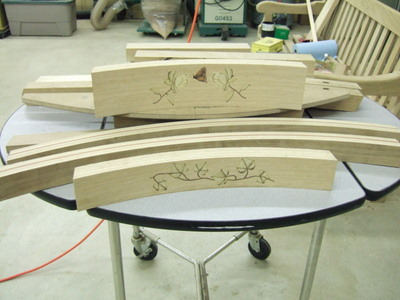
|
Here is a set of laminations for one chair after all the trimming and cleanup was done.
|
